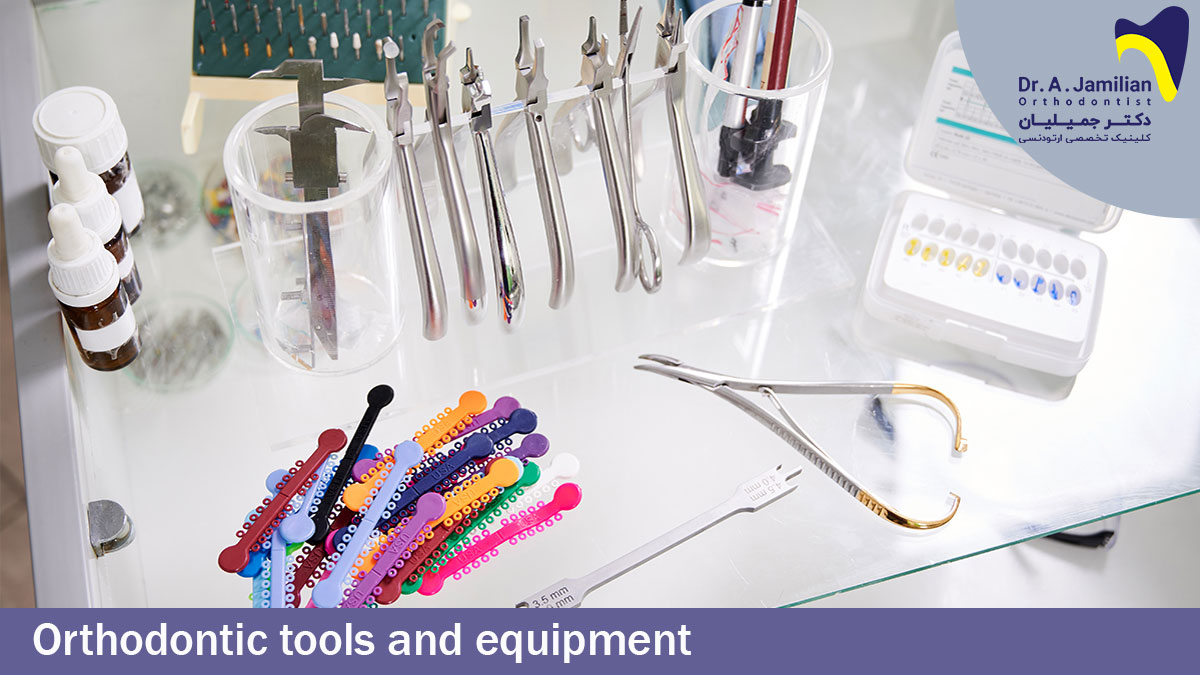Orthodontic instruments and devices are divided into two categories: a category includes consumables which are used for a single patient and another category includes instruments used by the orthodontist. This article intends to explain each of them separately.
Consumables Used for the Orthodontic Treatment
For correcting their patients’ teeth, orthodontists would use not only a group of the specialized instruments, which will be explained later in this article, but they need a range of common consumables such as orthodontic braces, brackets, wires and elastics. Below, I’ll introduce and briefly explain some orthodontics consumables and instruments. These are used by orthodontists during the various different stages of a treatment:
1. Orthodontic Braces
In orthodontics, braces are constituted of a collection of various sets and pieces which are used to correct a number of teeth after being interlocked to each other. Brackets and orthodontic wires are the most important ingredients used in braces, however, depending on the type and intensity of the disorder other ingredients such as bands, elastics (elastomer, etc.) would be used in a brace.

An unfastened orthodontic brace after treatment completion
2. Orthodontic Brackets
Orthodontic brackets, in two types of metal and ceramic, are amongst the major devices of an orthodontic treatment. Orthodontists would place the brackets over the patients’ teeth using the special dental adhesive or cement. Brackets act as a guide for correct leading of teeth movement and along with the orthodontic wires they constitute the major parts of a brace. Brackets commonly will have one or two grooves through which the orthodontic wire passes. It is often placed exactly at the proper point, that had been set by the orthodontist.
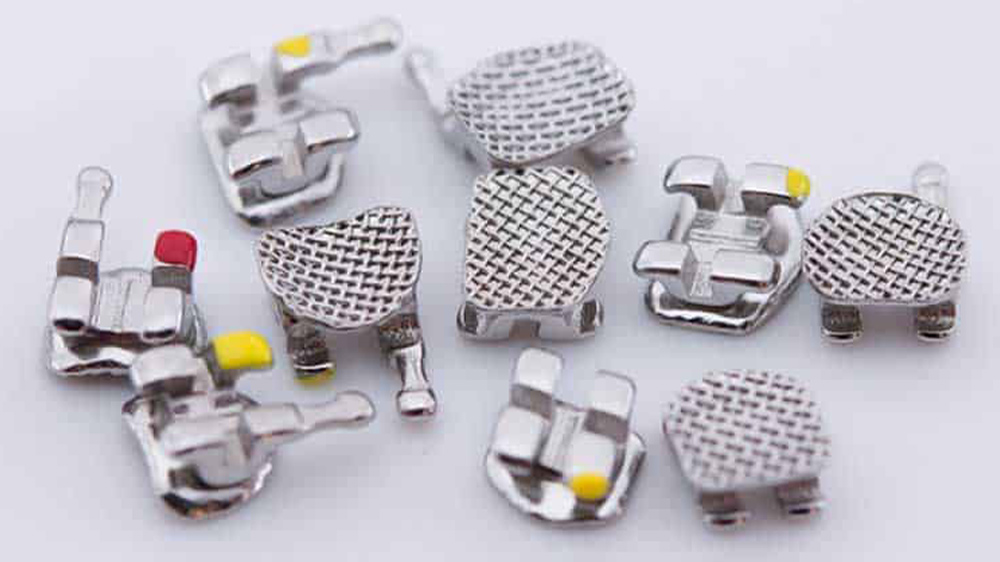
Orthodontic brackets
3. Orthodontic Wires
Orthodontic wires are another instrument used in orthodontic treatment. They are without a doubt one of the more popular ones. They are used in order to apply pressure and force to teeth and make them move. Orthodontists would bend wire like the dental arch and then would place them right inside the bracket’s groove. The movement of teeth developed by the bracket wire would correct the disorders of the patient’s.
4. Orthodontic Bands
A special band as an orthodontic consumable is used to keep braces in place. Orthodontic bands in fact are a metal loop made of stainless steel which are tied around the tooth by orthodontist. The orthodontic bands usually are used for the posterior teeth and rather brackets they stick to teeth more tightly.
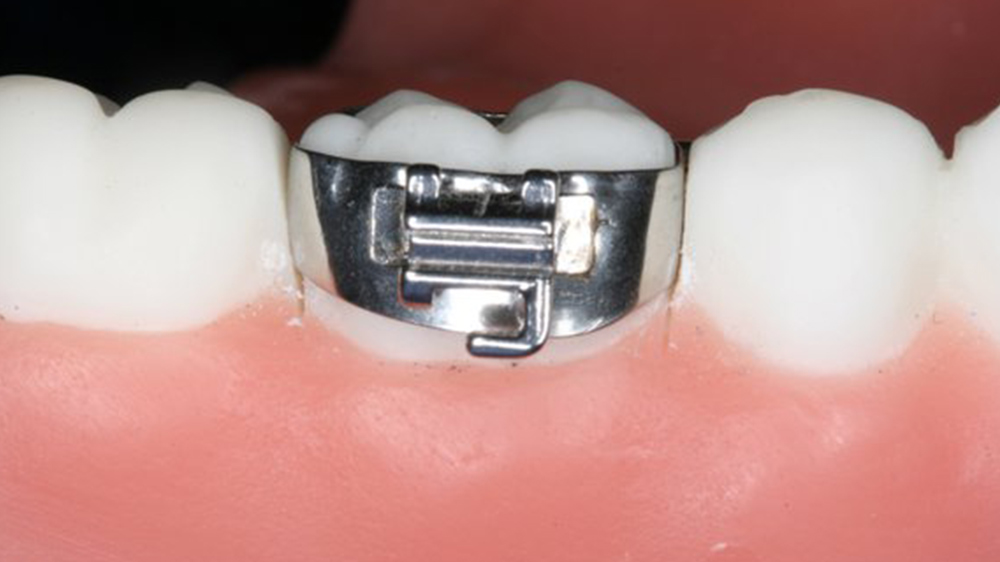
Orthodontic band
5. Orthodontic Elastics
Orthodontic elastics are small elastic tapes used for correcting the interrelation between jaws. This instrument either is placed at the posterior or anterior part of the tooth. However, if not placed there it would be somewhere between the lower and upper brackets. Orthodontic elastics, helps the tooth to find its correct and proper position. For treatment of certain dental and jaw disorders such as underbites or overbites, orthodontists use elastics along with braces to reduce the treatment period. Orthodontic elastics are used to deal with malocclusions as well. In the case of severe dental problems and disorders, orthodontic elastics are used to accelerate the recovery process and apply more pressure and force over the teeth to make them move faster and further. Using the best color of orthodontic elastic plays a key role in aesthetics of teeth after the operation.
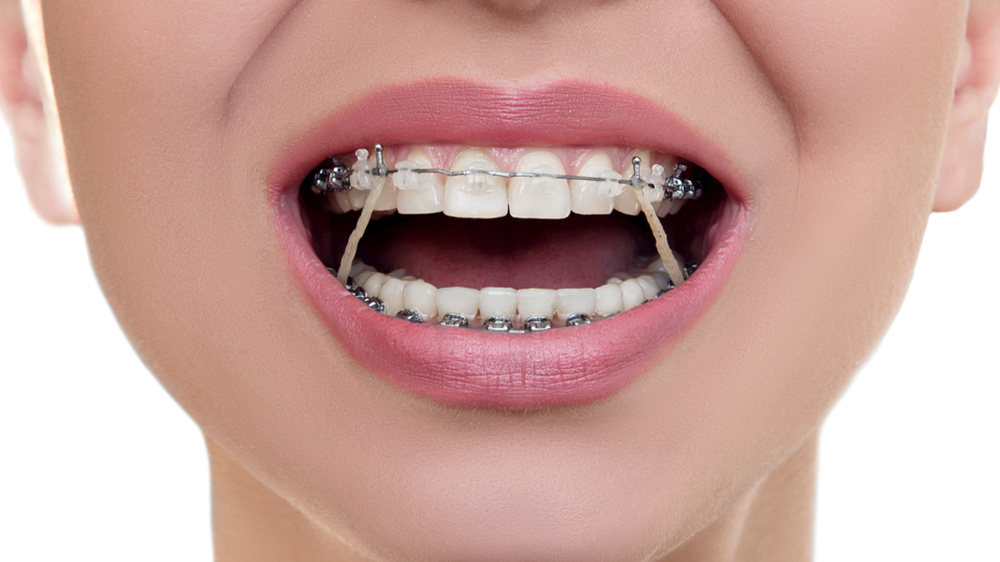
Orthodontic elastic over the brace
6. Orthodontic Hooks
As its name suggests orthodontic hook is an orthodontic instrument in the shape of a hook which is linked to brackets. Hooks are used as a point to connect with either the elastics or elastomers.
This helps form orthodontics quicker, and is a powerful and useful tool in many scenarios.
7. Headgear
Headgear is another orthodontic consumable which is used for treating patients with overbite or underbite problems. Overbite is a disorder where the top front teeth extend beyond the bottom front teeth, while underbite occurs when the bottom jaw and its teeth extend beyond the upper jaw and its teeth.
In general, it can be said that headgear is used for patients whose upper and lower jaws do not overlap properly. Prescribing headgears for such people is a way to reduce the growth rate of their jaw as much as possible. Headgear works in a way that through a very little pressure (the pressure is so that the patient does not feel discomfort or pain) prevents further forward growth of jaws and the teeth.

Placing the headgear on the replica
8. Herbest Appliance
Herbest appliance is another orthodontic instrument which alleviates the severity of overbite’s damage through pushing the molar teeth of the upper jaw backwards an also through pushing the lower jaw forwards. The constituting parts of a herbest appliance are made of stainless steel and are assembled through the telescopic mechanism. Herbest appliance often is used for patients who are of growing age, in other words for teens and youth. The useful time during which a patient needs to keep a herbest appliance in their mouth is about 12-15 hours.
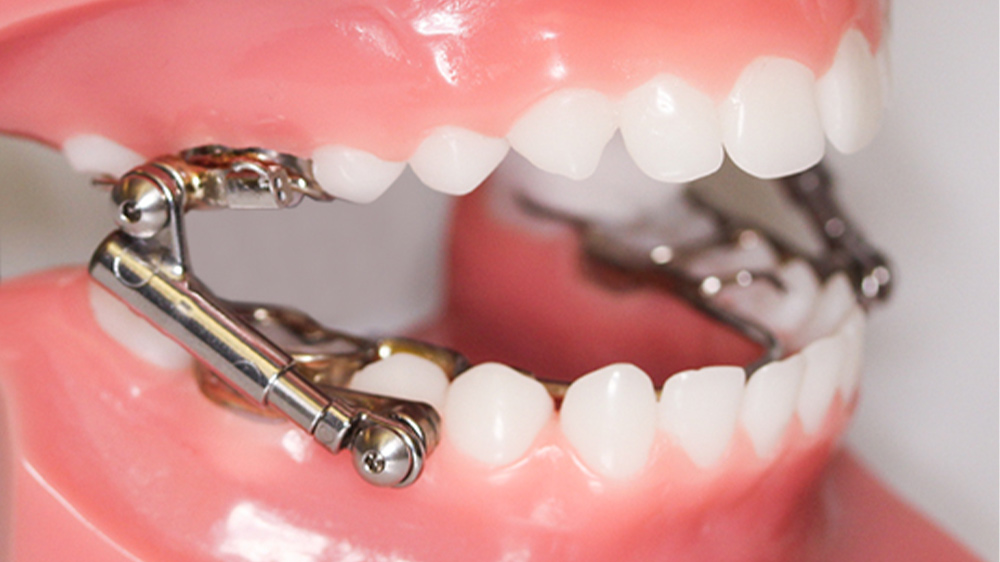
A Herbest appliance on the replica
9. Dental Space Maintainers or Spacers
Dental space maintainers or spacers are another orthodontic instrument. Spacer refers to elastic or steel loops which are used amongst the teeth. The reason for using space maintainer in orthodontics is keeping the space between the teeth. Keeping the space between the teeth is important because in the coming sessions your orthodontist needs enough space for placing the orthodontic band. By applying the necessary pressure between the two teeth and around the toothless area, this device maintains the empty space.
In the initial days of the space maintainer’s placement, don’t worry if you may feel a little pain/or discomfort. This is due because of the pressure applied by the space maintainer against the teeth. In cases when the pain is disturbing, orthodontists would prescribe proper painkillers for their patients. When using spacers, patients need to avoid sticky foods and also to avoid toothpicks and dental floss across the point where the device has been placed.
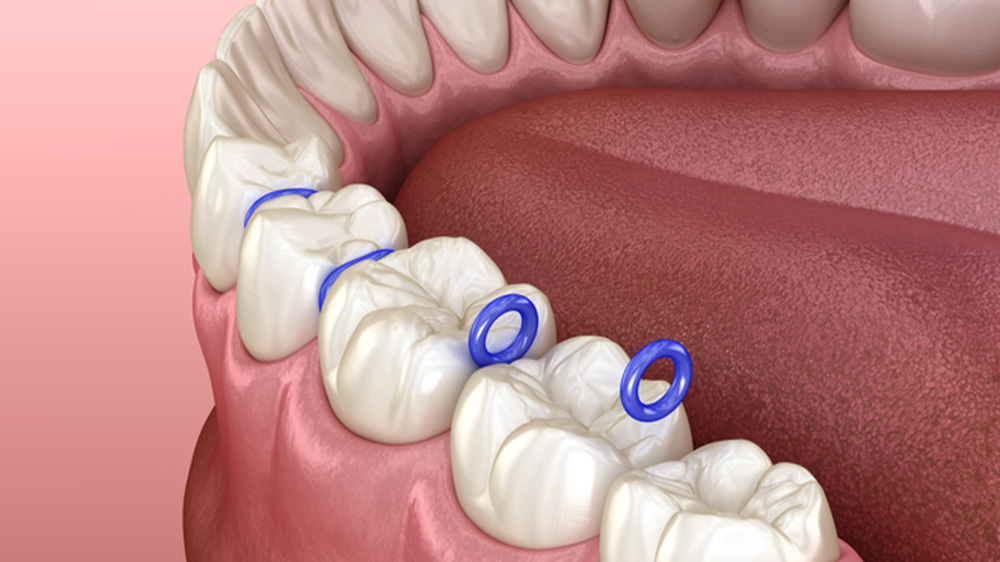
A space maintainer or spacer
10. Orthodontic Plaques or Retainers
Orthodontic plaques or retainers are other orthodontic devices. Retainers are employed after completion of orthodontic treatment. In fact, during orthodontics, the teeth are moved to be arranged properly. Sometimes, when the orthodontics is completed, the teeth would return to their former condition. To avoid this re-movement of teeth, orthodontists would prescribe orthodontic plaques.
Or in other words, orthodontic plaque prevents movement of your teeth after completion of orthodontic treatment. There are two types of orthodontic plaques: fixed and moveable. According to the diagnosis of your orthodontist, one of them would be selected for your treatment.
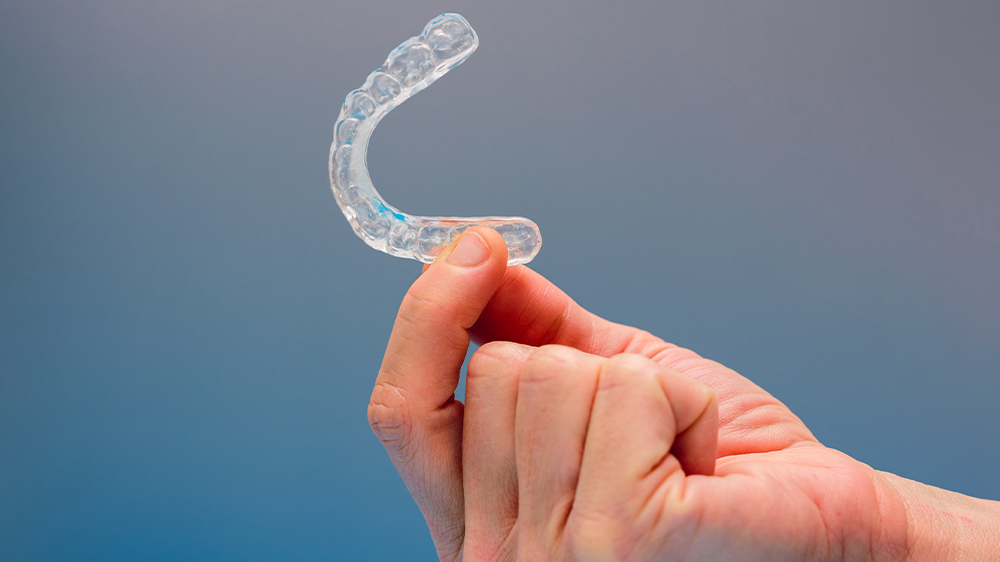
After-orthodontics plaque or retainer
11. Spiral Springs
Orthodontists would use the spiral springs in their treatment for filling or opening the space between the teeth or for maintain the space between the teeth. The spiral springs are placed over the orthodontic wires and in-between brackets
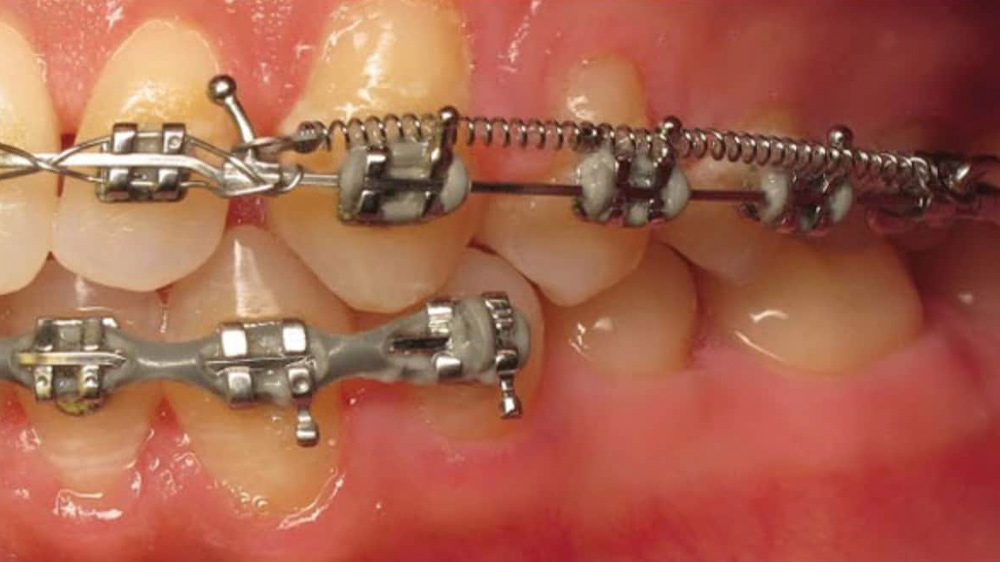
Orthodontic spiral spring
Specialized Orthodontic Instruments Used by Orthodontists
Orthodontic instruments and devices can be used dentists and their assistants for competing various operations of orthodontics including placing brackets, elastics, bands etc. At the present time, there are a great diversity of orthodontic devices in the market, as each of them have their certain application. Since your knowledge about the types and general performance of these devices can improve the collaboration between you and your orthodontist, in this article we are going to make you familiar with different orthodontic devices.
1. Ortho Separator Pliers
At their end part, separator pliers also known as separating clippers have a part which can keep the elastic separator. Another hear is designed in a way that you can take it easily. The elastic separator is placed over the tooth when the handles start to press each other. As a matter of fact, this plier acts conversely. Modules get closer to each other by pressing the handles.
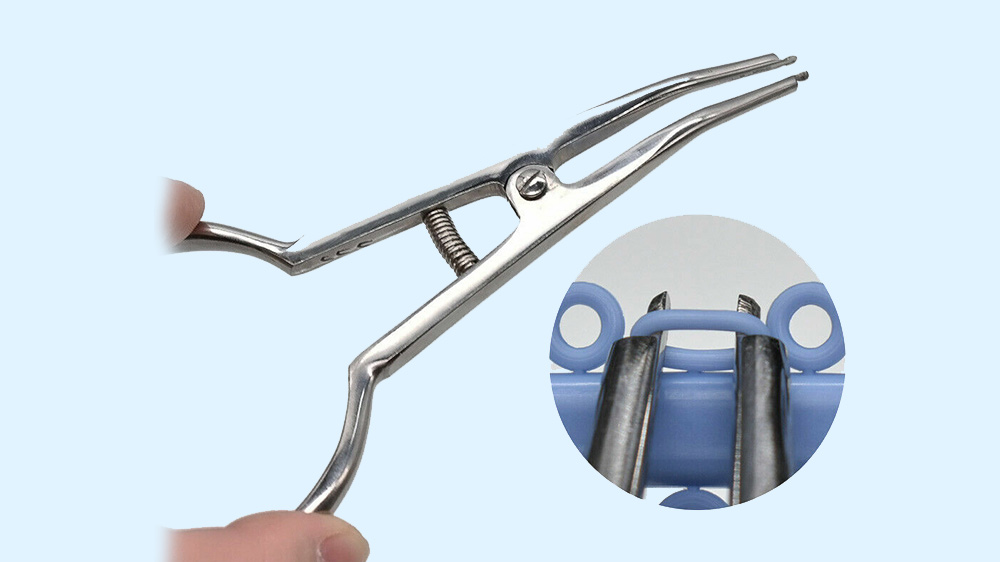
Orthodontic elastic separator pliers
2. Straight Probes
Another device of the orthodontics is straight probe which helps the orthodontist to put brackets over each other. Moreover, orthodontists can take the remaining composite off the brackets. Another property of this probe is that it let orthodontists to take elastomer ligatures off the orthodontic brackets. After placing beneath the brackets’ wings, ligature is a device which keeps the wire or any other accessories in the bracket’s groove. Ligatures mostly are made of stainless steel, elastic or elastomeric materials.
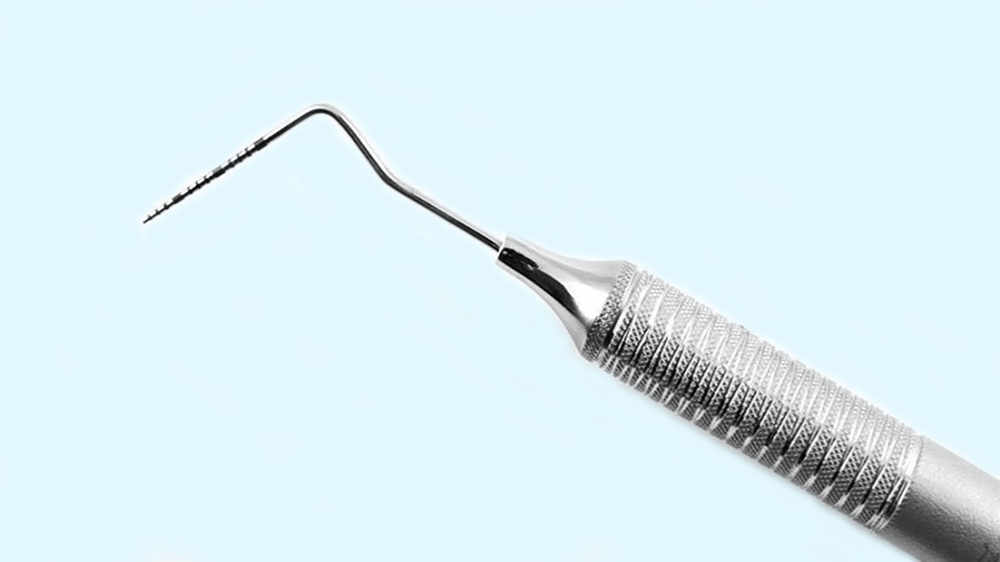
Straight probe
3. Howes Utility Orthodontic Pliers
Howes Utility is one of the most useful pliers used in orthodontic treatments. Simply put, they have two long handles similar to a birds’ beak. At the other end, some pads have been improvised which let orthodontists retain the bow wires when they need to place, take or even fasten the metallic ligatures. Please keep in mind that the size and shape of such beaks would be variable depending on the patient.
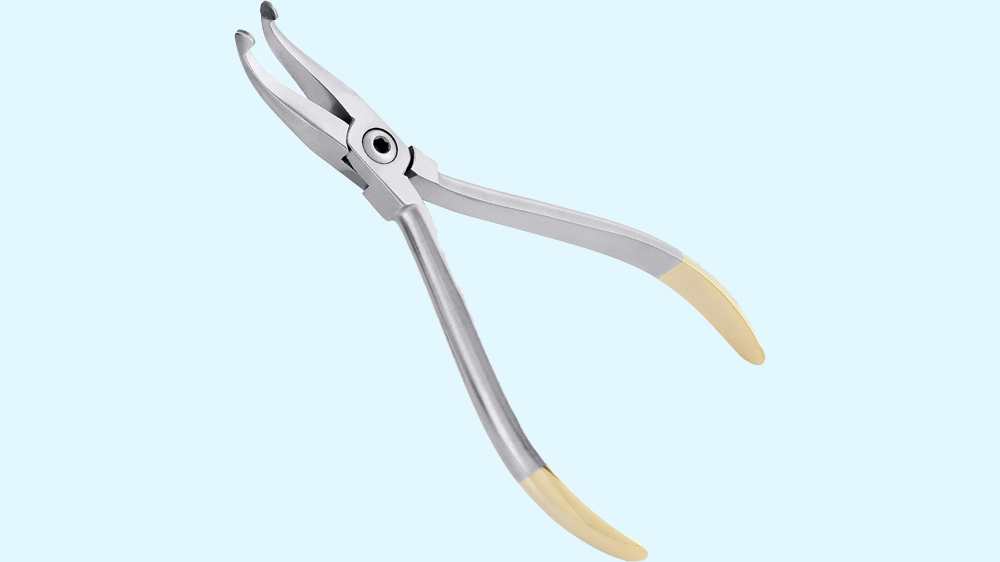
Howes Utility Orthodontic Pliers
4. Orthodontic Ligature Cutter
The ligature cutters are used to cut the ligature wires. It is important to note that this cutter is able only to cut wires with a diameter less than 0.015 mm; otherwise, it would be damaged. Cutting the orthodontic elastic is another ability of the ligature cutter.
This device has two cone beaks which can be seen at its two terminals. They can be re-sharpened, in case these parts became blunt. In some cases, the beaks can be replaced and their cutting angles would be different to each other.

Orthodontic Ligature Cutter
5. Distal End Cutters
In terms of appearance, distal end cutters have two cutting surfaces which stand in a right angle rather than to the main pivot. It also has long handles. It is used both before and after placing the bow wires. It is interesting to know that it is used also both before placing the wire outside the mouth and after installing it inside the mouth. The important point about this device its very high safety, because after cutting a wire, its small part is taken by the pliers to avoid its insertion into throat or other sensitive parts of mouth and to avoid any damage to the patient’s oral mucosa.
6. Mathieu-Style Ligature Pliers
Mathieu-Style Ligature Pliers is used to place the elastomeric ligature; thanks to its useful mechanism it can be opened or locked very quickly. To make easier its handling, the designer has devised some dents across its edges.
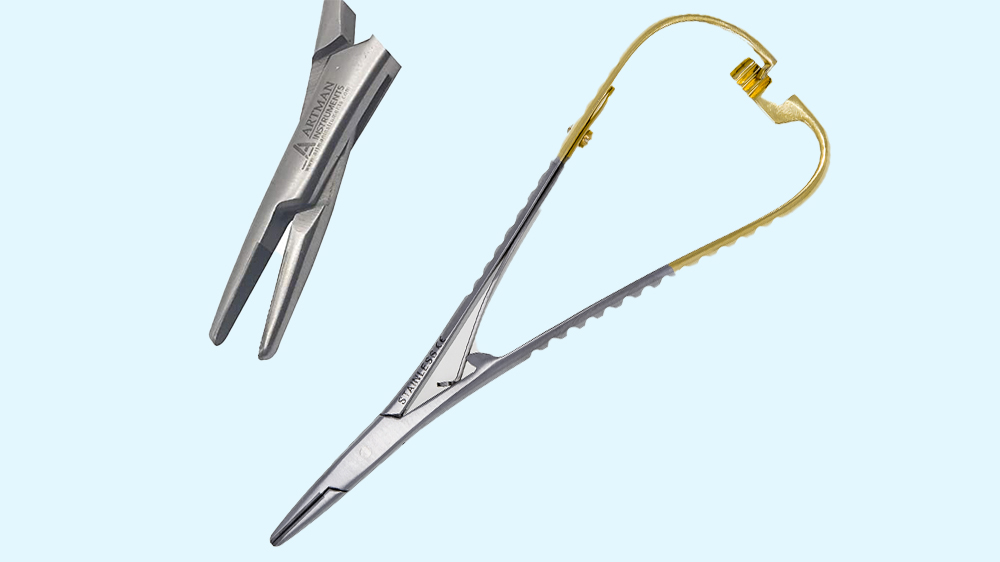
Mathieu-Style Ligature Pliers
7- پلایر 139
The 139 pliers with pyramid and cone edges is able to transform the orthodontic wires and also to bend them. The edges of this device are very stiff, as they can be sterilized very nicely. The 139 pliers are constructed out of stainless stee,l and can be used to make various sorts of orthodontic bends.
These pliers will often be used quite a bit, and is one of the interesting ones as the name’s not that popular compared to elasitcs.
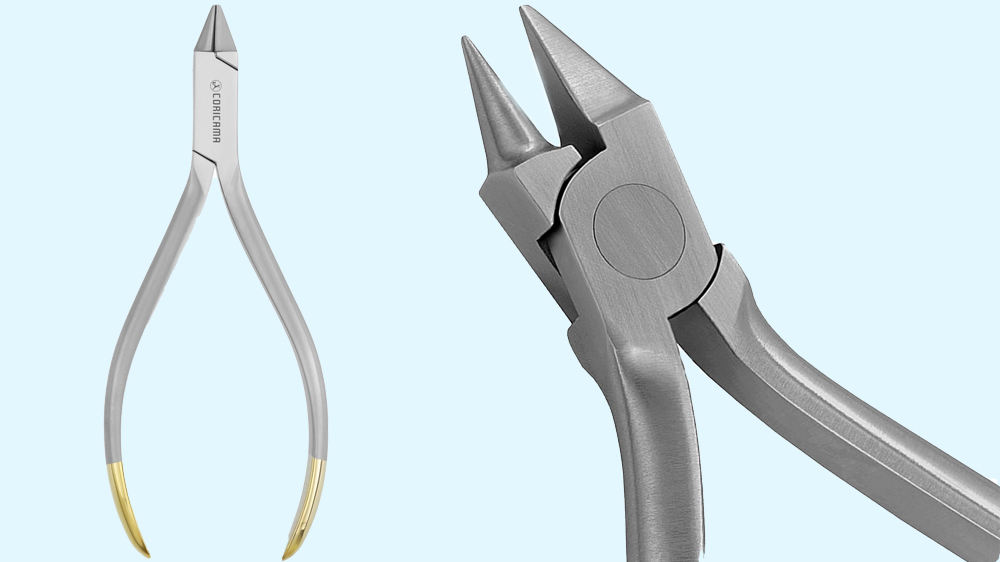
139 Pliers
8. Band Pusher
Band Pushers have a long handle and a dented and rectangular end. These orthodontic devices are used to put the orthodontic band over the tooth and then to install it. They are designed in a way that are completely safe for patients and guarantee their oral safety.
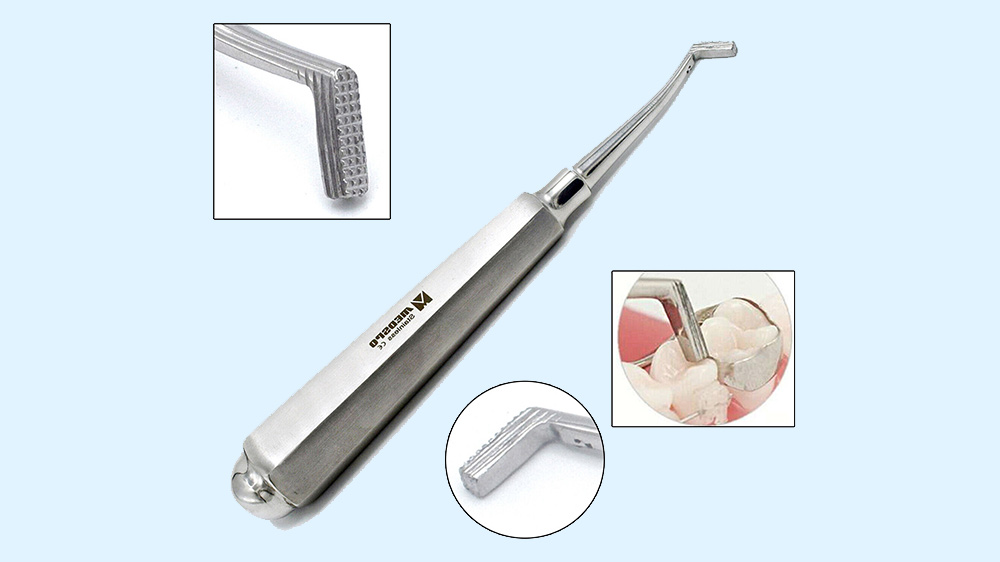
Orthodontic Band Pusher
9. Bite Sticks
Bite stick is another device used in different stages of orthodontics. It has a long handle and dented ends. This nylon-made device is available in different forms and shapes in market. Bite stick is used for placing the orthodontic bands and linking them to each other. In this stage, the patient needs to bite the nylon stick and it helps to reach a better outcome at the end of the treatment process.
10. Posterior Band Remover
Specialists take advantage of the posterior band remover to remove the posterior bands. The end of the posterior band remover is similar to a beak whose one end is equipped with a nylon appendage while the another end is straight and only has a tiny curvature. Its edges are made of stainless steel and the nylon part can be replaced. The nylon part is place over the surface when one starts to replace the band.
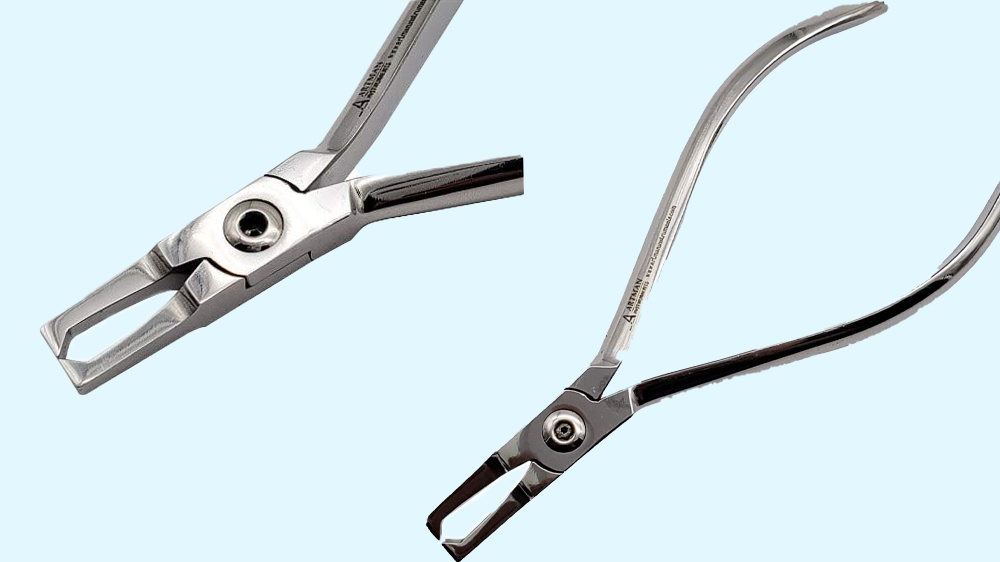
Orthodontic Posterior Band Remover
11. Band Burnisher
The appearance of band burnisher is as same as the band pusher’s. Their only difference is that the end of burnisers is somehow more straight that the end of pushers. This shape helps orthodontists to adapt and to contour the orthodontic band to the patient’s dental shape.
In this article, we tried to introduce the most important devices and instruments used in the orthodontic treatment. As you may know to achieve a correct and precise treatment appropriate devices and instruments along with high-quality materials and consumables play key roles. The higher the quality of the consumables and devices, the better and easier the treatment process would be.






